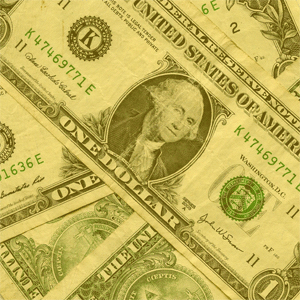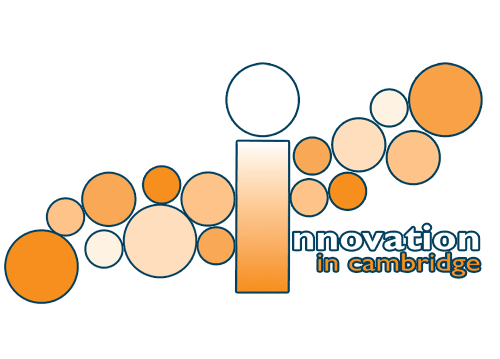
|
 |
Venture Capital
146 Sixth Street (Location of Ionics) |
Venture capital (VC) is money provided to young, high-potential start-up companies with an innovative (and therefore potentially lucrative) business plan. The concept behind this investment strategy is the belief that with the investment, the start-up will be able to become a successful company, and therefore the investing company, owning equity in the start-up, will make a significant return on its investment. While investments to bolster young companies existed in the first half of the 20th century, the money always came from wealthy families, such as the Vanderbilts, Whitneys, Rockefellers, and Warburgs. Companies were founded from the wealth of these super-rich families, but there was always a limit to their growth, dependent on what the families spent.
Modern venture capitalism was created when firms investing with private equity developed in the years following World War II. The potential for growth with this model became seemingly limitless. According to a 2009 Global Insight study, venture-backed companies accounted for 12.1 million jobs and $2.9 trillion in revenue in the United States in 2008.(1) Much of the boom in VC companies was fueled by the firms on Sand Hill Road, in Menlo Park, CA: the access point of Silicon Valley. Companies in this area have invested in and developed, among other things, numerous computer hardware, computer software, electronics, semiconductor, and telecommunications firms. While the contribution to the growth of VC is undeniable in Silicon Valley, the origins of venture capital exist on the other coast of the United States. Georges Doriot, French immigrant, WWII hero, Dean of the Harvard Business School and innovator, is known as “the father of venture capital.” While his firm was based out of Boston, many of his first investments, the investments that made modern venture capitalism a possibility and later a reality, were start-up companies in Cambridge.
Georges Doriot was born in France in 1899, and fought in the French army during World War I. He immigrated to the United States to earn his MBA at Harvard, stayed on, and rose to become a professor in the Harvard Business School in 1926. He became a U.S. Citizen in 1940, which allowed him to play a highly influential role in the U.S.'s war effort during the Second World War. He became Director of the Military Planning Division, working on military research, development and planning, in order to get new ideas made into products to be used for the battlefield. He rose as high as Brigadier General, and at the end of the war U.S. Army General Chief of Staff, Dwight D. Eisenhower, asked Doriot to serve as the director of a new Department of Research and Development. Eisenhower explained that “The armed forces could not have won the war alone. Scientists and businessmen contributed techniques and weapons which enables us to outwit and overwhelm the enemy...This pattern of integration much be translated into a peacetime counterpart.”(2) Doriot, however, wanted to return to Harvard and his life as a professor, and agreed only to serve as deputy director until a permanent replacement could be found. Doriot explained later, “There was no hope of doing anything very constructive and everybody was sort of bossed out and fed up with Army expenditure.”(3) Despite not taking the job, he did, however, share in Eisenhower's ideas.
Once back at Harvard, Doriot did not return to his old life as planned. Intimately aware of the importance of science and technology, Doriot embarked on a new path to ensure postwar American prosperity. Along with MIT President Karl Compton, Ralph Flanders, Merrill Griswold, and Donald K. David, Doriot founded the venture capital firm American Research and Development Corporation (ARDC) which was incorporated under Massachusetts law on June 6, 1946. Doriot wrote in the company's first annual report that ARDC was created, “to aid in the development of new or existing businesses into companies of stature and importance.”(4) As mentioned above, this was not the first VC firm, but it was the first not backed by a wealthy-East Coast family inheritances. The founders of ARDC were celebrities of their era, and the foundation of ARDC was covered and discussed in many leading newspapers. People were curious to see if this experiment would survive. The Boston Globe concluded that, “if this company does not pan out, it will not because it has not plenty of the right kind of brains behind it.”(5)
In order for any VC firm to survive, both the first and VC firms of today, it must make sound investments in companies that have a bright future. Innovative companies based in science and technology, employing the brightest minds of their generation became the sustenance that allowed ARDC to survive. Many of these start-up companies were in Cambridge. ARDC itself started out on Milk Street in Boston, and later moved to the 23rd floor of the John Hancock building, but Doriot remained active at Harvard and the ideas of Cambridge thinkers attracted his attention.
In its first year ARDC invested in three companies. Circo Products, a Cleveland-based company received $150,000 for worked to develop a handgun that melted car engine grease. The other two companies were based in Cambridge. High Voltage Engineering Corporation, a company based out of a converted parking garage by two MIT scientists, received a $200,000 investment for their work on developing a two-million-volt generator, eight times more powerful than existing X-ray machines. An additional $150,000 went to Tracerlab, Incorporated, also founded by scientists at MIT, which sold radioactive isotopes and made radiation detection.
ARDC was very picky in deciding which companies to invest in. In any given year ARDC would never finance more than 4% of the proposals they received, and usually the number was closer to 1 or 2 %. In 1947, their first full year of of operation, ARDC received over 400 proposals. Of the ones the company did invest in, Baird Associates of Cambridge, received $225,000 for making instruments used in the chemical analysis of metals and gases.
While the company saw modest growth early on, it continued to invest carefully, looking for the first major “home run.” At the end of 1948, Cambridge-based Ionics, Incorporated was one of the more revolutionary companies in the ARDC portfolio. Doriot had been introduced to Walter Juda, a PhD candidate in chemistry at Harvard who was working on a membrane that was designed to make brackish water potable for irrigation and drinking by sorting metallic from nonmetallic ions. Doriot called up a colleague at Dow Chemical Company to ask if this idea had any merit. The colleague told Doriot that the technology was impossible, but Doriot had Juda send a membrane to the Dow company. Doriot received a note a few days later from his colleague which read, “That's the breakthrough,” and ARDC soon after invested $50,000, creating Ionics, Inc. Doriot himself joined the board. By the end its first decade, Ionics, High Voltage Engineering, and Tracerlab, all Cambridge companies, were the most successful of ARDC's investments. By the mid-1950s, however, profits were stagnating, and proposals were becoming less frequent. In 1954, ARDC made no new investments. The firm needed its big break, and in 1957 they got it.
Ken Olsen and Harlan Anderson, Olsen an MIT grad and Anderson on the staff at MIT's Lincoln Labs, put together a business plan in the spring of 1957 to launch a computer company that would make machines that were cheaper and easier to build and use than the hulking, IBM mainframes they had experience with at the Lincoln Labs. Doriot needed some new projects and was intrigued by their ideas, but thought the plan needed to be edited. Olsen and Anderson wanted $100,000. ARDC offered them $70,000, and $30,000 loan, in return for a 70% share of the company, take-it-or-leave-it. No other companies had offered them anything, and according to Olsen, “A number of companies had started in the Korean War. A number were no longer in existence.”(6) They had no other options, and so they took the deal. As part of the agreement, in response to an industry still hesitant to the word “computer,” Digital Computer Corporation was renamed as Digital Equipment Corporation (DEC). DEC was the first VC major success. In 1968, following DEC’s initial public offering, ARDC shares were worth $355 million—500 times its original investment.
The impact of ARDC is immeasurable. During the Doriot years, ARDC launched several major companies that are still influential today. Teradyne Inc. was not making money when the company came to ARDC for an investment in the 1960s. Today, based out of North Reading, Teradyne is worth $2.3 billion. Ionics Inc., one of the early Cambridge-based ARDC investments, was purchased by GE in 2004 for $1.1 billion, and remains a leader in the manufacture of water treatment solutions that create value for people, businesses and industries.(7)
Beyond being the first modern venture capital firm, a number of Doriot's employees founded their own influential VC firms. Former employees of ARDC have gone on to found several prominent venture capital firms including Greylock Partners in Silicon Valley and Morgan, Holland Ventures, the predecessor of Flagship Ventures, in Kendall Square, Cambridge. Doriot retired in 1971, and the following year merged ARDC with Textron, Inc. of Rhode Island, after investing in more than 150 companies. ARDC company has since become and independent entity again, but it does not disclose much about its activities and it does not have a website. Venture capital is an elemental part of the modern American economy, and this important innovation stems from offices in Boston but investments in the start-up companies of Cambridge.
References:
Spencer E. Ante, Creative Capital, Harvard Business Press: Boston, 2008.
http://www.boston.com/business/articles/2008/04/06/venture_capitals_grandfather/ --with a video
http://www.alumni.hbs.edu/bulletin/2008/june/prophet.html
http://www.pbs.org/wgbh/theymadeamerica/whomade/doriot_hi.html
http://museum.mit.edu/150/78 –mit museum article
http://www.ionicsfidelity.com/aboutus.html
http://nvca.org
2010 Global Venture Capital Survey Results, nvca.org (back to text)
Spencer E. Ante, Creative Capital, Harvard Business Press: Boston, 2008, p. 106 (back to text)
|



